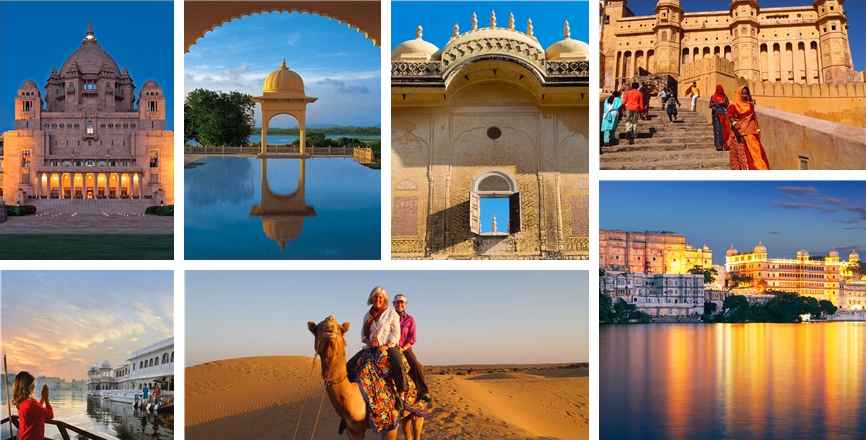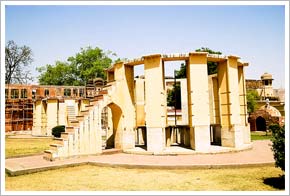

'Instrument measuring the harmony of the heavens' is the literal meaning of the wonderful Jantar Mantar, Jaipur, Rajasthan. Sawai Jai Singh II was the master mind behind the creation of this astronomical observatory. He built it in stone and marble in the year 1716. He would often walk into the Jantar Mantar to use it with his teachers Pandit Jagannath and Kewal Ram who were experts in astronomical studies. There are seventeen instruments within the boundary of Jantar Mantar, each serving a different purpose. The use of these instruments is not that easy and time is an important factor in taking the readings. Today this brilliant monument is one of the National Monuments of India.
There are four other stone observatories in India which are also called Jantar Mantar. They are located in Delhi, Ujjain, Mathura and Varanasi. However, the Jantar Mantar in Jaipur, Rajasthan is the biggest amongst all. It is located within the premises of the famous City Palace. Sawai Jai Singh was an educated man and had a deep interest in astronomy. His seeking spirit helped him to create Jantar Mantar by applying astronomical inventions of several countries. Its completion took seven years.
Some of the Instruments used in Jantar Mantar are:
Kranti Yantra: Its function is to measure the longitude and the latitude of the celestial bodies.
Diganta Yantra: Its function is to measure the azimuth (the arc of the horizon measured clockwise from the south point) of planetary bodies.
The twin Ram Yantra: It serves as an instrument to measure the altitude and the azimuth.
Chakra Yantra: It helps to find out the angular measurement of an object from the equator.
Jai Prakash Yantra: It is used to determine the co-ordinates of the celestial bodies.
Amazingly these stone instruments give accurate readings when used correctly.